Where do your ideal customers hangout online?
Are they hanging out at sites like Facebook or LinkedIn? Listening to podcasts? Watching how-to videos on YouTube? Engaging in passionate discussions in online forums? If you want to find your audience—no matter how narrow or broad that audience is—read on. We’ve collected some of the best strategies and tactics to help you find your more of your ideal customers online in this article.
If you want to skip to a specific platform where you think your audience may be spending their time, you can jump to it here:
- Who is your ideal customer?
- Finding your audience on Facebook
- Finding your audience on LinkedIn
- Finding your audience on Instagram
- Finding your audience on Pinterest
- Finding your audience on Twitter
- Finding your audience in online forums
- Finding your audience through blogging and SEO
- Finding your audience through podcasting
Over the past twenty plus years, I’ve had the pleasure of working with a wide variety of companies and entrepreneurs who want to find out where their audience hangs out online. Sometimes they’re looking to reach a very specific audience: decision makers at manufacturing plants or career counselors at Ivy League schools.
Other times they are looking to reach an audience that may not have a specific job title, such as women from 35 – 55 years old who are interested in healthy eating, or dog owners in southern Maine with disposable income.
As you can see, there’s rarely a one size fits all solution, no universal platform that always works. In fact, sometimes the solution requires some offline or traditional approaches, such as TV ads, direct mail, or attending the right networking events. (One day, hopefully soon.)
However, there’s almost always an online component to this discovery and outreach strategy. I say almost because I recently consulted with a marketing agency that works exclusively with the Amish. So….

In this post I wanted to share some strategies and tactics that can help you find your ideal customers in their online hangouts. I even got some friends who have expertise on certain platforms to weigh in on how they recommend you find your audience online.
Caveat: not all of these tactics will work for you. If your audience isn’t on Instagram, no amount of time spent there will prove fruitful. If you audience doesn’t understand hashtags, even the best hashtag strategy will come up empty. The hope is that once you’ve discovered which platforms your audience is likely using, you can use the appropriate tips to find them there.
Who is your ideal customer?
For some businesses, especially when you're just starting out, you may not be clear on who your ideal customer is. If you find yourself in this situation, I recommend that you reach out to a local organization like your local Small Business Development Center or a local chapter of SCORE. They offer free advice from experienced counselors who can help you identify your ideal customer.
 One free resource that a lot of people are surprised to hear me recommend is your local library! The business librarian can help uncover incredible details about the potential audiences you wish to serve. I recently interviewed the business librarian from the Portland Public Library and he shared how he can get access to databases that you can't get through Google! He can find out how many coffee drinkers live within two miles of your business, their addresses, and more!
One free resource that a lot of people are surprised to hear me recommend is your local library! The business librarian can help uncover incredible details about the potential audiences you wish to serve. I recently interviewed the business librarian from the Portland Public Library and he shared how he can get access to databases that you can't get through Google! He can find out how many coffee drinkers live within two miles of your business, their addresses, and more!
Honestly, check it out. It's a fascinating and powerful resource regardless of what stage you are at in your business
Another problem is going after too broad an audience. I once asked a restauranteur who his customer base is and he answered, “anyone who needs to eat to survive.”
Funny? Maybe. But knowing that your ideal customer are families who like affordable Mexican food, live within two miles or just finished shopping at the nearby mall, will definitely help with your local ad buy and Facebook targeting.
It's rare that businesses start too narrow with their audience, so that shouldn't be your main concern.
Where is your audience online?
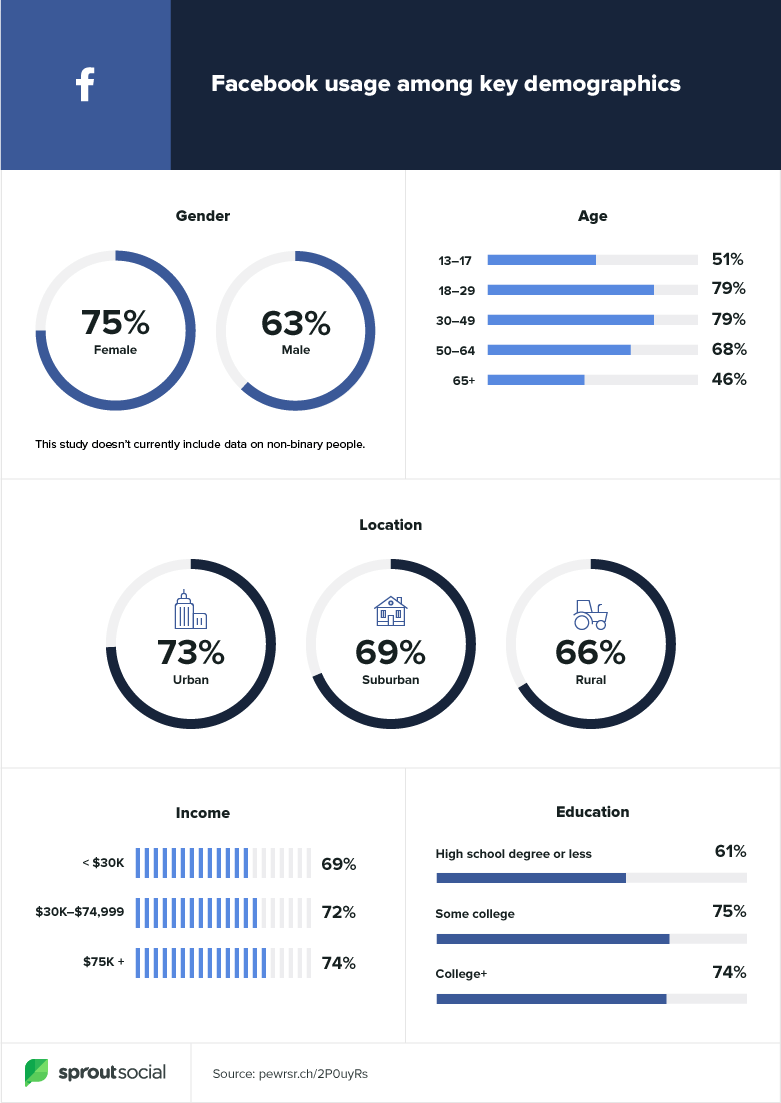 Once you have a good handle on the audience you're going after, the next thing to consider is where they might be hanging out online.
Once you have a good handle on the audience you're going after, the next thing to consider is where they might be hanging out online.
Social media is the first thing we tend to think of when think about people “hanging out” online. Of course, there are a wide variety of social media sites, each with its own primary demographic. Millennials and Gen Z prefer SnapChat and TikTok where Boomers and Gen X may spend more time on Facebook or LinkedIn.
That being said, you'll find a wide range of people on just about every platform. Sprout Social does a good job of providing updated data on some of the broad strokes of social media demographics by age, gender, education and more.
Beyond social media, you'll find people discussing various topics on discussion forums across the web, asking Google questions, watching how-to videos on YouTube, and more.
Let's dive into some of the more popular hangouts online and how you can find your audience there.
Finding Your Audience on Facebook
With seemingly more than half the world on Facebook, this seems like a good place to start your search. However, be careful how you tread. Just because your audience is here doesn’t mean they want to hear from you.
They’re looking to see what their friends have been up to, check out pictures of nieces and nephews, and catch up on fake news. Your sale on kitchen counter tops or tax tips may come across as a nuisance.
Facebook Advertising
Ads on Google and other search engines are all about getting in front of someone when they’re showing buying intent, regardless of who they are. Facebook advertising, like all social ads, is more about identifying people who are likely to need your services even if they don’t have an immediate need.
In other words, social ads are a powerful tool for finding your audience.
Although not as powerful/invasive as before the Cambridge Analytica scandal, Facebook’s targeting capability can help you identify people based on age, gender, income, where they live, when they’re visiting your neck of the woods on business or pleasure, interests, what they read, watch, and listen to, when they’re thinking of moving, whether they’re a dog or cat person, and a million other criteria.
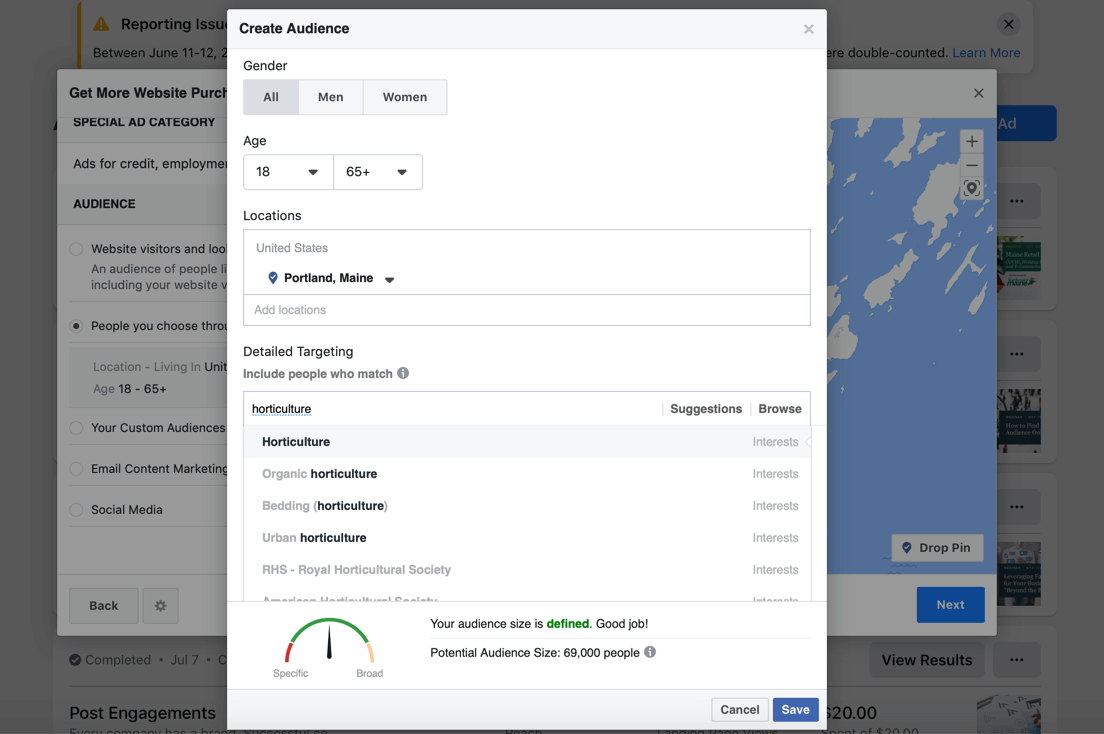
However, if you are in an industry that comes under Facebook's Special Ad Category, such as jobs or housing, some of your targeting is limited as it would be in the real world.
For a more detailed look at Facebook Ads Manager be sure to check out Use Facebook Ads Manager to Attract Your Ideal Customer.
Facebook Groups
There are groups for every topic under the sun on Facebook, but that doesn’t mean it’s like shooting fish in a barrel.
Which is a strange metaphor when you think about it. Wouldn’t all that gunfire destroy the barrel? And who wants all that lead in your mackerel, anyway?
Yes, you can find groups for birdwatchers and beekeepers, but charging in there with discounts and pitches may just get people to ignore you or even kick you out of the group.
You can certainly do a Facebook search for appropriate groups, but it’s always good to listen first and speak later. If the group seems to be open to people pitching products, then by all means, pitch. But if the group tends to be more supportive without any products being mentioned, be aware of that, too.
If you decide to invest your time here, make sure that you’re always providing help and advice, not just links to your products and services.


Facebook groups are the absolute best way to find your audience. All you have to do is find the right group and make friends with the admins! For example, let's say you were selling a box that had a bunch of math and science projects for kids. Finding all the mom's facebook groups would be a gold mine for you! You would want to look for the local ones, national ones, see what they offer their communities and then come along side them with your value offer.
Maybe you could pitch them to do a Facebook Live on fun things to do with your kids when you want to get them off the screen. Show them how to use household items to create fun experiences and then (admin approved) pitch your product at the end?
There is a Facebook group for just about everything. They eliminate the need for you to find individuals that fit your customer avatar and enable you to access an entire group of them! It can be magical!
Finding Your Audience on LinkedIn
Is your audience on LinkedIn? It’s more likely if they are in a B2B (business to business) industry. However, most professionals these days at least have an account on LinkedIn.
LinkedIn has a powerful prospecting tool for identifying individuals who would be great clients, partners, or vendors. Of course, it helps if you have a powerful profile and regularly post to the newsfeed. If you'd like to learn more about how to use LinkedIn like a pro, be sure to check out our LinkedIn on demand training video here.
Once your profile is on point it's time to start prospecting. Using the search box in the top left corner, you can search for other LinkedIn users based on their name, job, or just about any keyword.
Here I'm searching for “social media managers.” Once the results roll in I can further refine by search by geography, company, industry, experience, and more.
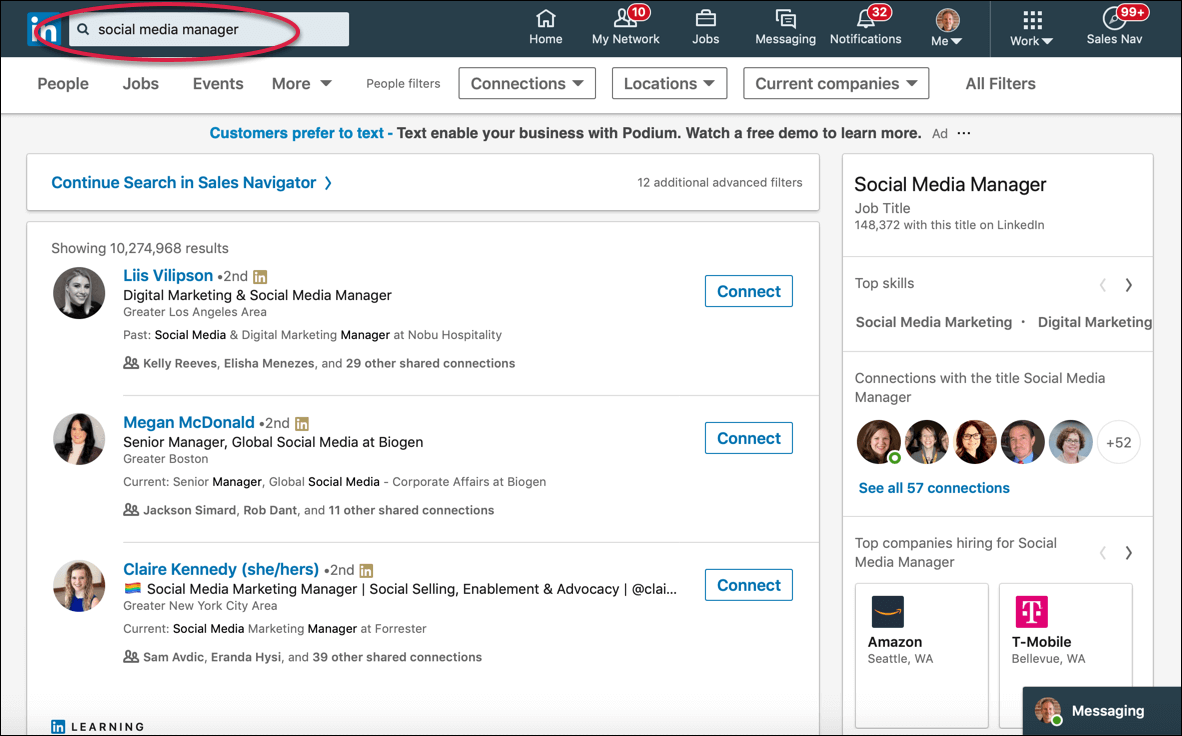
Whether you’re looking for school comptrollers in the northwest or home health agency owners in the southeast, it won’t take long to find and identify your audience.
LinkedIn Groups
I used to love LinkedIn Groups for finding your customers, but unfortunately they mostly devolved into a place where people do drive by posting…they post something for others to see and never stick around for a conversation.
I say mostly, because there are well maintained groups on LinkedIn with thriving communities. In fact, one of our clients started his own group to connect with other people in the philanthropy world, and currently has over 23 thousand members, gaining about 150 a week. And these aren't spam accounts; he recently culled the group of bad actors and ever since engagement is higher than ever.
So it's worth investigating to see if your industry has a well maintained group on LinkedIn, or possibly even starting your own.
LinkedIn Ads
LinkedIn has its own ad platform that allows you to target your ideal customers in the newsfeed, sidebar, or through Messenger. While it doesn't have all the demographic information that Facebook does, it's great at targeting people based on their job title, experience, and all the other filters you saw while prospecting.
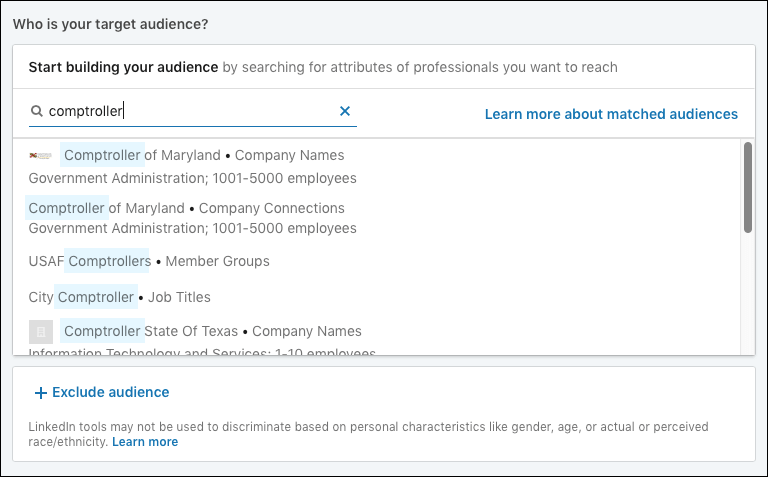

Because professionals keep their LinkedIn profiles updated to reflect their work experience more than any other platform, LinkedIn Ads becomes the most accurate way to reach them at scale.
It allows you to narrow your audience targeting to such specifics of job title, seniority, skill, group, company size, industry, and even company name. You can even upload your own lists to target just those individuals on LinkedIn.
This precision of targeting allows companies to generate high-quality leads from their most ideal customers. Be warned, though - this targeting doesn't come cheap. We regularly see advertisers paying between $8-11 per click, which is a significant premium over a platform like Facebook where you might be paying $1-3 per click.
Finding Your Audience on Instagram
Whether you're a brand or a person, you can find your audience on Instagram. Instagram works really well for B2C (business to consumer) companies, especially ones with visual appeal.
We've found the best two ways to find your audience on Instagram is a combination of hashtags and advertising.
Many users search by hashtags on Instagram, so using appropriate hashtags, #Maine, #dogs, or #beer, for example, can put you in front of the right audience.
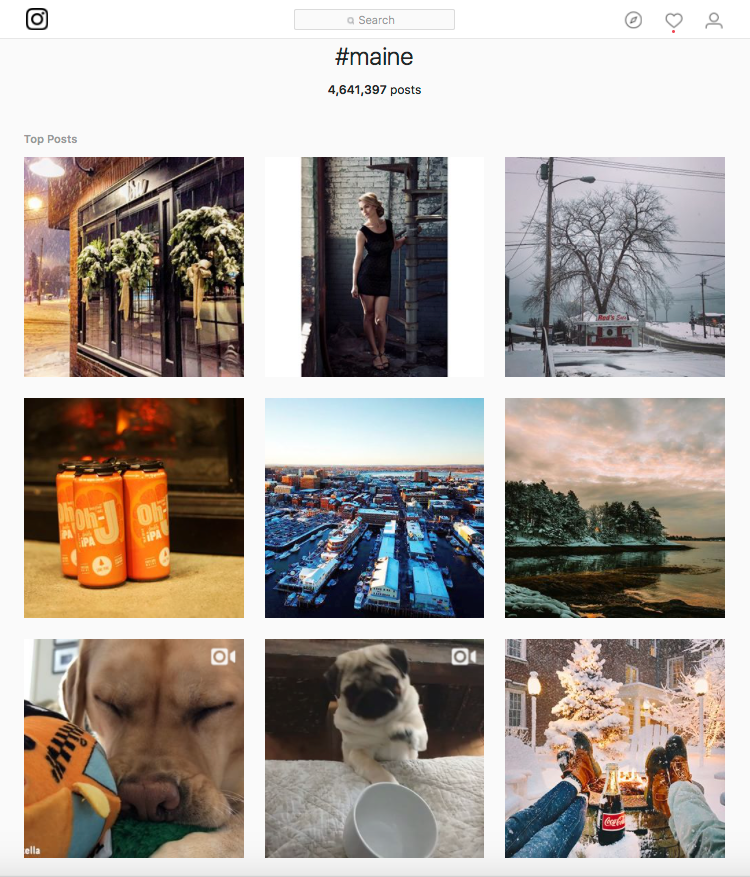
(Coincidentally, the top post when I grabbed this screen capture is from our own project manager, Lindsay Babayan!)
Instagram's ad platform is Facebook, so it's incredibly robust. If you can target someone (or a group) on Facebook and those people are also on Instagram, you can put your post (ad) in front of them.
What's more, is that Instagram ads are clickable, unlike traditional Instagram posts. So you can use ads to drive traffic to a landing page or website.
Jenn Herman, social media strategist, has some additional ideas on finding your ideal customer on Instagram.

One of my favorite ways to find your target audience is to follow local, event, or hobby hashtags where your audience is likely to be sharing posts. For example, I stalk all major social media conference hashtags knowing my target audience are those in attendance at those events.
Then, you want to go through and like the majority of the posts on that hashtag and even comment on those you really appreciate. This gets your account into their notifications and on their radar. They are likely to visit your profile when they see you've liked their posts. Once on your profile, if they like your bio and posts, you're likely to gain them as a follower.
Finding Your Audience through Pinterest
Pinterest has never been my strong suit. Let's be honest. It's my Kryptonite.
It could be gender. Only 17% of online men use Pinterest compared to 45% of online women. Pinterest also skews a little younger, although older users are adopting the platform. In my favor, Pinterest attracts a more suburban, more college educated audience.
Luckily I work with a lot of smart people who spend time in the platform. For a lot of our clients who are seeing some success on Pinterest–driving traffic and sales at their website–using Pinterest's ad platform, Promoted Pins, can offer a great ROI and help put you in front of your ideal customer.
Alisa Meredith has been one of my go-to people for years when it comes to Pinterest, and she has her own approach to finding your audience here.

The beautiful thing about Pinterest is that the visual search and discovery platform is designed to help people find new content and new sources of content. So if you are well set up for search and use visually-appealing, actionable images, Pinterest will actually help you build a potentially all-new audience by showing your content to people who may not even have been looking for you!
I would recommend focusing on optimizing your Pins for search and action as opposed to trying to build up followers. Followers only help your reach if they engage with your content. Think of each Pin you publish as a little gift for your potential audience. If you have several different audiences in mind, you can make different Pins to appeal to each - even if it leads to the same content. Experiment with images, descriptions and the text you use on images to find out what works to bring traffic to your site. Even better, set up UTM tracking to find out what kinds of Pins reach the audience you need and move the needle for your business.
Finding your Audience on Twitter
Ah, Twitter. Once my favorite social media platform where I had real, organic conversations, connected with people, and drove qualified traffic to our website. Now a place where it's hard to get much traction unless you're a sports star, the POTUS, or your last name is Kardashian.
Still, there are real conversations going on there with real people (not bots), if you're willing to look. Like with Instagram, a lot of conversations happen around hashtags, so look for hashtags related to your industry, whether it's #education or #marketresearch.
Also, the influencers in many industries spend time on Twitter, increasing their visibility and extending their platform. It can be easier to reach and engage these influencers on Twitter than on other social media platforms.
Finally, there are Twitter chats on a variety of topics…think of these as discussion forums within the Twitter platform. You might be able to gather information and even engage your audience during the #artbizchat, #homesteadchat, or the #smartparentingtips chat. You can find a large selection of chats by day at TweetReports.
Finding Your Audience in Online Forums
One of the most overlooked resources for getting pure market research on your audience are online discussion forums.
You can find groups of your ideal customers sharing ideas, questions, problems, memes, and more at discussion forums across the web. Sometimes they're on social media platforms like Facebook and LinkedIn, as discussed before, but you can also find your audience hanging out at sites like Reddit.
If you've never visited Reddit, it's made up of a seemingly infinite number of groups called subreddits, covering everything from home repair to Sherlock Holmes, Warcraft to craft beer, crossbows to cross stitch.
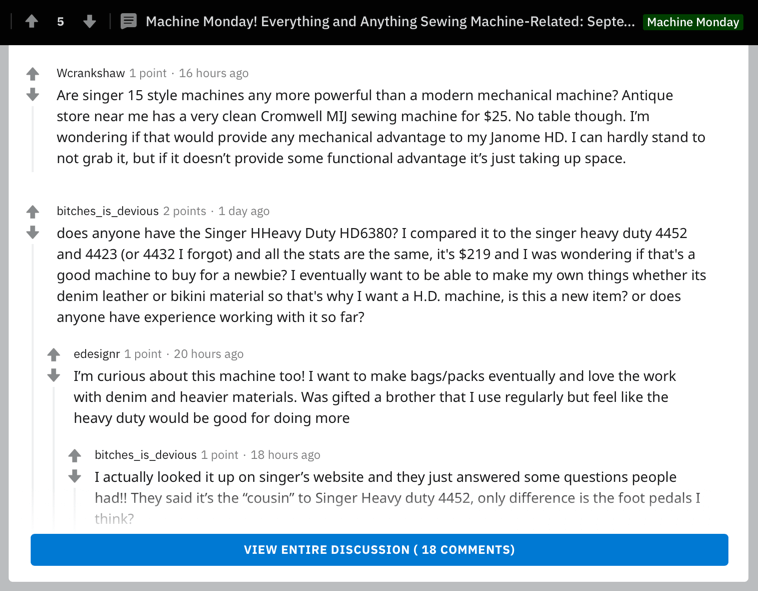
Whatever your industry or focus, you can find members of your audience chatting it up here. Again, it may not be a good idea to go in guns blazing pushing product, but it's a great place for gathering information and ideas, and trying to be a non-salesy, helpful part of the community.
Online forums exist throughout the web, so if Reddit isn't your cup of tea, you can do a google search on “[topic] + discussion forum” to uncover other places your audience is meeting online.
A client of ours recently launched a product and we found that there was some heated discussion about their product vs. a competitor in one of the forums. They were able to discover some of the biggest concerns about their new offering and how people perceived it in comparison to their competition. Without doing that research they never would have uncovered that information.
Finding Your Audience through Content Marketing
For many people, they're not hanging out on social media sites. Even if they are, they're not interested in your sales pitch when they do. They are instead spending time in the Google or YouTube search bar, or perusing the shows in a podcast directory.
Content marketing is about creating content that your audience wants and needs so they can make better, more informed decisions. You can create content that addresses your ideal customers' concerns at all stages of their decision making process. Content marketing can include writing blog posts, recording podcasts, creating videos, sending emails, delivering webinars, and more.
With content marketing you're not exactly finding your audience through blogging and SEO, you're putting yourself in a position where you can't be missed.
Below are some specific ways in which you can get found as your prospects are consuming helpful information.
Finding Your Audience through Blogging & SEO
Despite what people may have thought in the early days, blogs don't have magical SEO powers. However, they make it easy to create and publish content that your audience is searching for. That feels like magic.
Before writing your blog post (or any other online content), be sure to perform a keyword analysis. This will help you understand exactly the words your audience is using when they get to Google, and will help you outrank your competition.
If you're in a rush, you might try using Google Trends, a free tool from Google that allows you to compare different search terms and look at search volume over time and by geography.
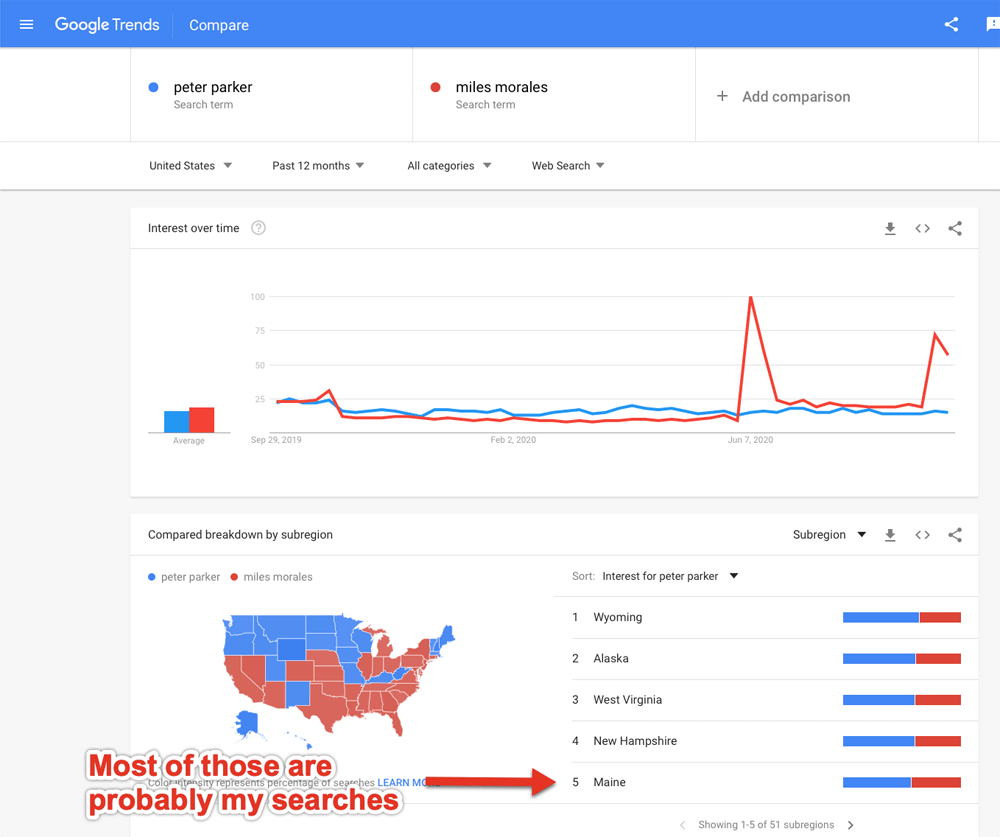
Further down the page you can find top and rising search terms. Rising terms especially can give you ideas for topics that have a lot of search volume but potentially not a lot of competition.
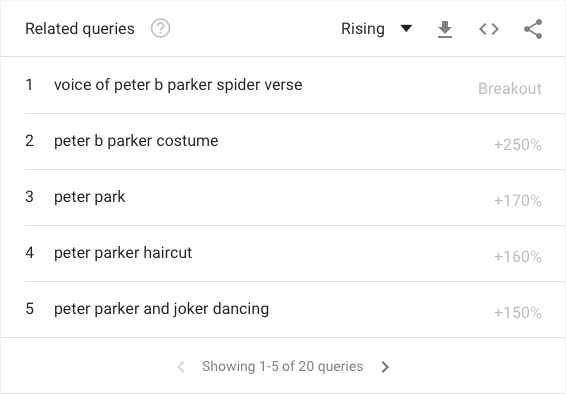
And one last tool I like using is Answer the Public. This tool scrapes Google's suggested search queries that appear when you begin to type your search. It is based on previous searches, so it gives you an idea of what your ideal customer may be searching for.
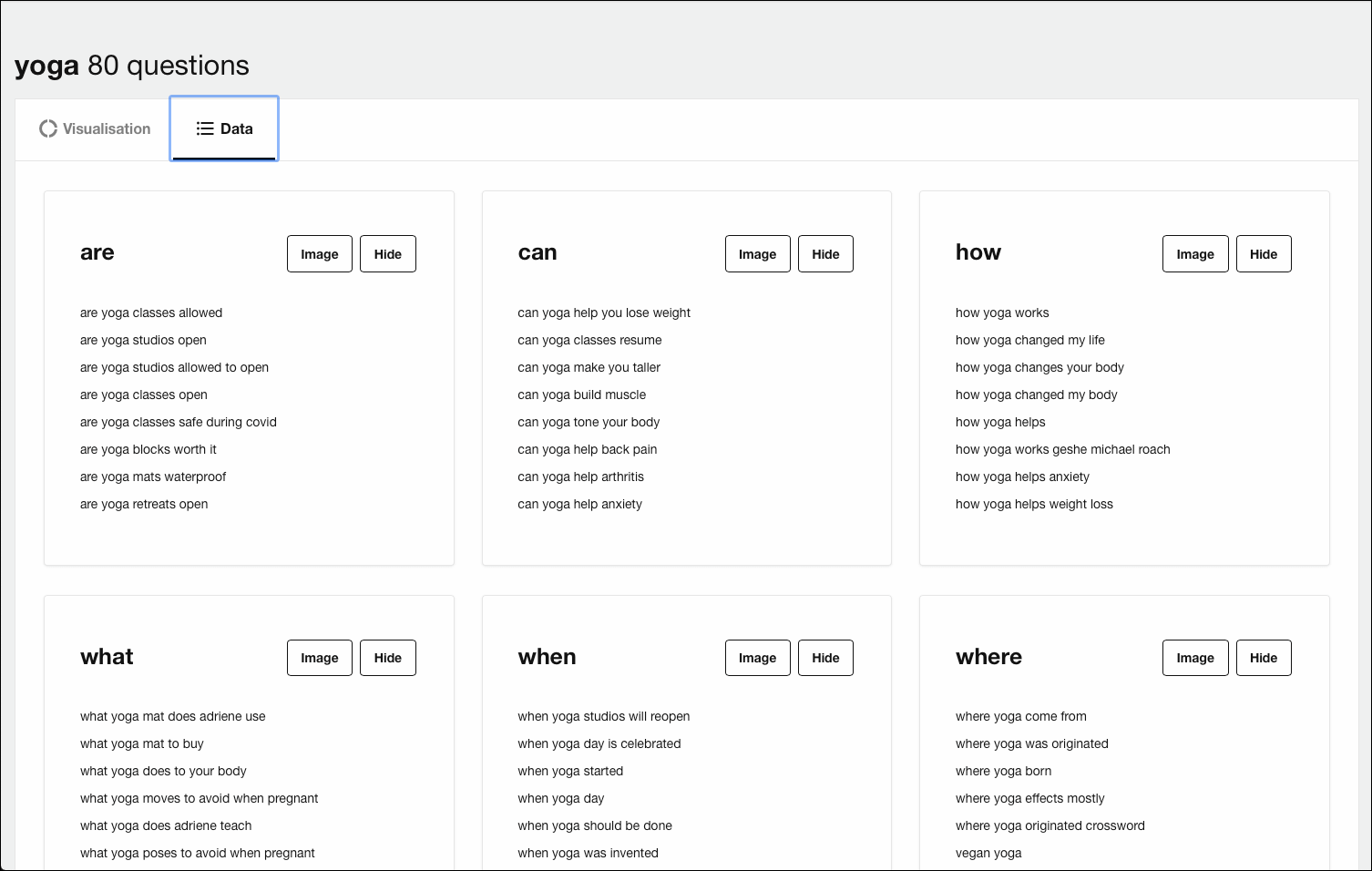
Finding Your Audience through Podcasting
 I love podcasting and the benefits it brings my company. I've had a digital marketing podcast for years now–The Agents of Change–which has attracted clients from across the country to our little digital agency tucked up in the upper right corner of the US. More recently, I've started a new podcast called Fast Forward Maine where we discuss what owners need to know to grow their companies.
I love podcasting and the benefits it brings my company. I've had a digital marketing podcast for years now–The Agents of Change–which has attracted clients from across the country to our little digital agency tucked up in the upper right corner of the US. More recently, I've started a new podcast called Fast Forward Maine where we discuss what owners need to know to grow their companies.
Although the audiences are smaller, podcasting gives you the opportunity of making a deeper connection with your best customers. Podcasting tools have been added to new cars, making it easier for people to find you during their morning commutes, or during those long drives to Buffalo. Platforms like Amazon and Spotify are adding podcasts to their offerings, making it easier for people to listen during their workouts or while they make dinner.
And best of all, podcasts allow you to get (literally) inside your audience's head!
As more people start to explore podcasts, you have an opportunity of getting in front of them. My buddy John Lee Dumas, one of the biggest names in podcasting, has this to say:

With Podcast consumption on the rise, more people are being introduced to this amazing medium every day. To find shows of interest, these new Podcast listeners are using the search bar in Apple Podcasts at a very high rate (over 60 million searches a month).
What keywords do you want to be ranked for? Your Podcast Title and author line will ensure people searching for your identified key words will find your Podcast, your brand, your products and services. IGNITE!
Next Steps
Regardless of your industry or whether you're in B2B or B2C, your audience is online. Sometimes you can engage them when they're hanging out on social media sites or in discussion forums, and other times you need to make sure you're there on the first page of Google, in the podcast directory, or a related video on YouTube.
Start by getting clear on who your ideal customer is, then determine where they are likely to hang out. If it's social media, create engaging posts and targeted ads.
If it's in forums, find those groups and become a trusted resource.
If they're more about consuming helpful content, invest your resources there.
Still need help finding those elusive customers online? We're happy to help you track them down!
Rich Brooks
Online Sleuth
